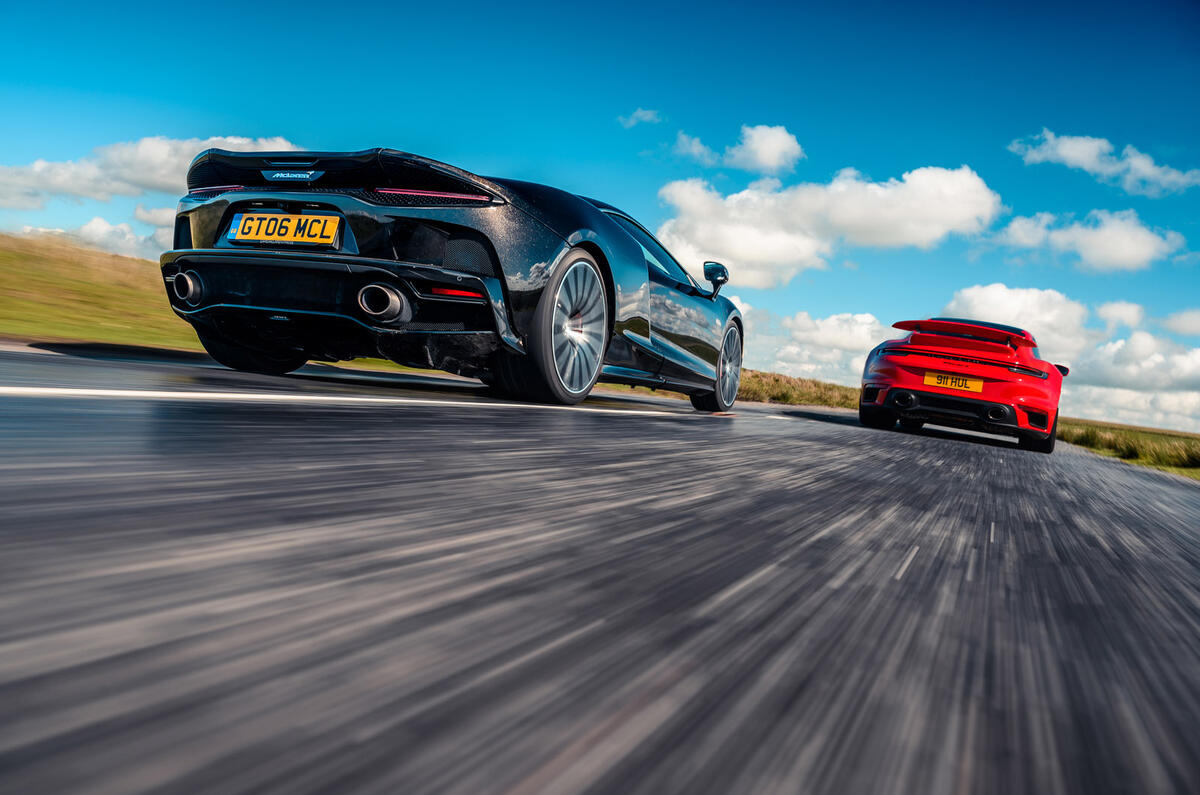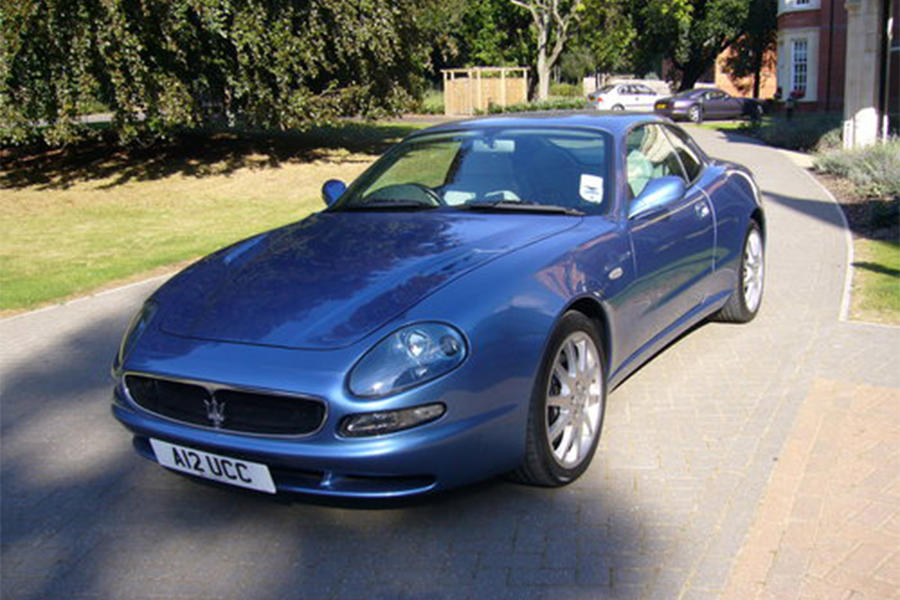Today’s premise isn’t very complicated.
The seventh-generation 911 Turbo, driven here in S trim for the full 641bhp monty, moves Porsche’s famous export away from its recent roost as an ICBM-quick but more long-legged device and to somewhere sharper and considerably harder. Somewhere where its road-racer roots are once again threatening to break through; where its supercar-slaying credentials have, in the 45 years since the original 3.0-litre 930 Turbo was born, never felt so strong.
Meanwhile, McLaren, with its new GT, has given us a machine that in the metal and on paper shrieks supercar but is really, according to CEO Mike Flewitt, “designed for distance” and “refines the notion of a grand tourer in a way that only a McLaren could”. Clearly there’s an element of convergence here. For prospective owners, the two cars – mighty mid-engined Mac and colossally boosted 911 – now cruise in the same airspace for the first time. To make matters all the more intriguing, only £7030 separates them.
So which is the more rounded, which is sweeter to drive, and which one should you buy if you’re lucky enough to have £160,000 burning a hole in your Swiss bank account?

Our day of finding out begins at McLaren’s service HQ, which is hidden away in Old Woking, just around the corner from the premises where the Porsche-engined Formula 1 cars were built in the early 1980s. It’s my first chance to see the McLaren GT up close.
The ducktail is sensational, but the glossy new multi-spoke wheels – at 21in, the largest ever fitted to any McLaren – don’t confer much in the way of the marque’s hallmark function-over-form thinking and the high snout still looks awkward. The nose has been styled this way not only to give the car fuller and more traditional GT proportions but also to lay the groundwork for the 150-litre frunk and to lift the splitter higher than usual above the road.
























































Join the debate
Add your comment
I'm happy that the new car
I'm happy that the new car dials in more driver involvement and they have reversed a trend. I had a 997.2 turbo which disappointed compared to the 996 before it and the 991 made matters worse. I sought refuge in the GT cars but this new turbo S is food for thought.
Annoying ads
Really enjoyed the article but why have Autocar included epilepsy-inducing, flickering adverts alongside the text? Really takes away from enjoyment of the content.
Reporters are such reporters...
Back in the day when 911 Turbos had hydraulic steering, manual gearboxes and were pretty raw in how their systems reacted and could be outright handful with systems turned off, they had no soul and there is no dialog with the driver. Now when it is all run by a bunch of computers, with auto box, self-steering rear wheels etc they suddenly have a soul. :-D All these comparisons are a bunch of highly subjective bs.